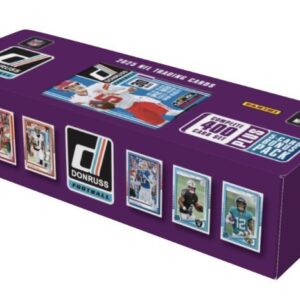In a world where collectors are consistently chasing the most prestigious, high-ticket items, one Michael Jordan basketball card is quietly making its move from backstage to the spotlight. No, it’s not the fabled 1986 Fleer rookie card—the holy grail for enthusiasts—it’s a distant cousin, the 1989 Fleer #21. For those with an appreciation for the finer, less ostentatious aspects of collecting, this card represents an appealing mixture of affordability and nostalgia. And as its value creeps steadily higher, many are starting to take notice.
You won’t find this card featured on auction house billboards or wowing crowds in sleek displays, but what it lacks in hype, it makes up for in consistent performance. Let’s rewind a bit to set the scene: back in 2021, securing a PSA 10 grade of this card would set you back about $1,001. Not pocket change, but far from earth-shattering in the world of high-end sports memorabilia. However, come June 2025, that very same card is now fetching around $1,200. A 20% increase isn’t the kind of news that makes headlines, yet in the collecting cosmos, that kind of steady rise is worth its weight in gold.
PSA—Professional Sports Authenticator, that is, the surname everyone wants on their graded treasures—shows approximately 1,240 PSA 10 graded cards of this type floating around amidst a sea of over 11,000 PSA 9s. Plenty of stock, you might think, yet demand remains unsatiated, particularly among those who have realized splurging isn’t a requisite for building a quality collection.
Perhaps what’s more eye-opening, though, is the surge in demand and corresponding jump in value witnessed among non-graded, or raw, copies of the 1989 Fleer Jordan. Only a couple of years ago, around 2022, you could pocket one for a mere six bucks. Today, you’d need to cough up twenty dollars to make one yours. Over three times the increase is not a shabby performance, especially for a card that started life as something most collectors wouldn’t give a second glance to.
So, what’s fuelling this sudden affection for the 1989 Fleer #21? Several factors, it seems. Rising grading fees are nudging collectors toward alternatives that come pre-slabbed, while others find themselves drawn toward the nostalgic charm of late ’80s NBA action and the burgeoning Michael Jordan, Chicago Bulls legacy. It doesn’t hurt either that many simply want to own a piece of ‘His Airness’ without wiping out their savings.
In a typical collection, the 1989 Fleer doesn’t scream for attention: it’s not graced with flashy graphics like dunking over Ewing or any glitzy gold foil borders. Instead, it’s an intimate snapshot of a legend in his prime, quietly capturing the essence of a fledgling Bulls mania. For collectors with a discerning eye, this card has become the choice of those who prefer subtlety over pizzazz, nostalgia over numbers.
So, for the collector hunting for value, seeking long-term upside, or simply yearning for a break from the usual suspects in the marketplace, the 1989 Fleer offers an opportunity that’s becoming increasingly hard to overlook. Much like Jordan, who, as everyone knows, didn’t need the rookie label to dominate the hardwood, his 1989 Fleer card similarly thrives without the limelight usually reserved for its 1986 counterpart.
As the years go on and more collectors awaken to its potential, the forgotten cousin might just become the reliable family member you’d be proud to spotlight in your collection. While it’s hard to predict anything with certainty in the ever-fluctuating world of sports memorabilia, the 1989 Fleer card’s past performance suggests a solid foundation for continued growth, attracting collectors eager to hold a piece of basketball history without having to mortgage their current existence. Jordan’s legacy may be well established, but his 1989 card’s story is still being written, line by line, collector by collector.






